August 10, 2023
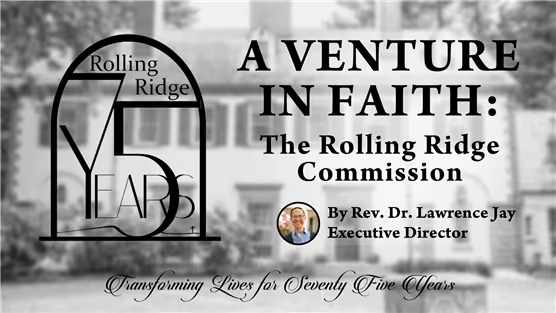
As Rolling Ridge celebrates 75 years of ministry in 2023, we continue a monthly series on the second week of the month to share our history. Our 75 year history officially begins in 1948 when the Methodists purchased the 38 acres along the shores of Lake Cochichewick from Russell Tyson. And it all began through the faith-filled efforts of a group of committed men and women who served on the Rolling Ridge Commission. This is the beginning of our story.
By Rev. Dr. Lawrence Jay, Rolling Ridge Executive Director
Although the Pennacook first called this land home, with Ethan Allen purchasing the 38 acres along Lake Cochichewick in North Andover in 1899, Fletcher Steele planting the gardens in 1915, and Russell Tyson purchasing the property in 1928, the Rolling Ridge story of transforming lives really begins in 1948 when the Methodists took a leap of faith and pursued a vision which has been our legacy for 75 years.
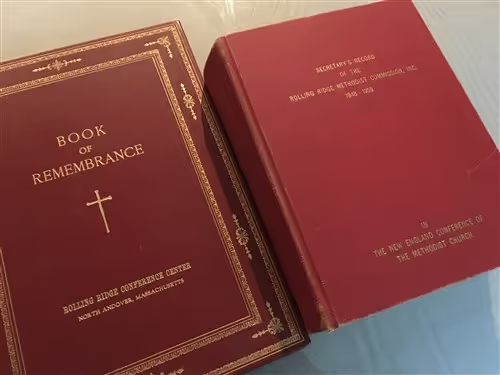
It all begins with Carl Pearson, who was a member of the North Andover Methodist Church and who worked for Russell Tyson as the caretaker of Rolling Ridge. During a pastoral visit in 1946, Pearson told his pastor, Rev. Ralph York, that the property was being sold.
Rev. York, who was involved with the Conference Youth Institutes as an Assistant Dean, knew the Board of Education for Methodists in New England had appointed a committee earlier that year to look for a camp site for youth. During the summer, Youth Institutes were week-long confirmation camps for Methodists with the New England Conference lacking proper facilities and needing the atmosphere and surroundings “so conducive to a proper institute program.” York had just been in conversation with Dr. Howell E. Estey, who was on the newly formed Camp Site Committee, and had committed to “be on the alert for what was needed,” when he visited Pearson. Upon seeing the grounds of Rolling Ridge, York saw the ideal place for “Christian education around the Conference.”
York immediately called Estey, who “investigated the grounds and the entire building very carefully” before calling Howard Selby and Nelson Bridgham to inspect the property. The unanimous consensus, unwavering commitment, and “consecrated effort” of York, Estey, Selby, and Bridgham spearheaded the Methodist vision to purchase Rolling Ridge. As the records clearly state, “each one has been enthusiastic, has had a vital faith, and the courage to overcome obstacles together, as we have moved along.” And for that faith we are grateful 75 years later, for there were many obstacles along the way.
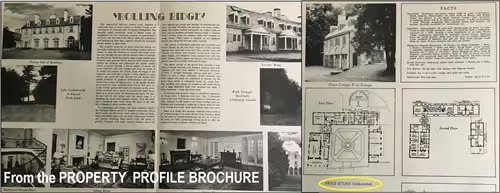
Tyson’s original asking price for Rolling Ridge in 1946 was $75,000, which would be about $1 million today. Originally listed under a broker, by the time the Rolling Ridge Methodist Commission had been approved by the New England Conference in June of 1948, the sale of the property was being handled by Tyson directly. With Selby as chair, the Commission was formed “to purchase and operate the estate known as Rolling Ridge in North Andover, Massachusetts, without financial responsibility to the Conference.” This meant that the Conference would not be financially involved and that all funds to purchase and operate the Ridge would need to come from the efforts of the Commission.
The initial understanding of the Commission, which included York, Estey, Selby, and Bridgham on the Executive Committee, was that Tyson had been willing and ready to sell the property to a youth group a year earlier for a sum of $60,000. This amount shaped much of the initial fundraising and budgeting plans when the Rolling Ridge Commission was formed and approved by the Annual Conference.
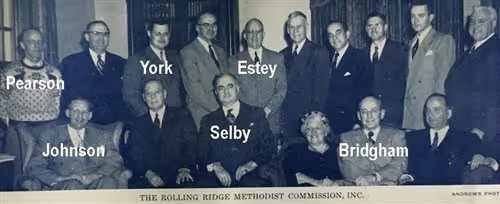
When the Methodists began serious conversations in June 1948, Russell Tyson, who was a successful real estate broker from Chicago and 80 years old at the time, proved to be a hard sell in negotiating the sale of the property he had owned for 20 years.
Etsey took responsibility for the negotiations because he had “considerable experience in dealing with older men in regard to their personal affairs and property, with good success.” During their first meeting, Tyson lowered the $75,000 price to $67,500 but “persistently refused to reduce” over subsequent meetings.
In the words of Selby, the first chairperson of the Commission:
“At the time of interviewing Mr. Tyson, Dr. Estey and I learned that $67,500 was the lowest figure to which he would give any consideration. He agreed to accept $17,500 in cash and the balance of $50,000 would be carried as a mortgage to be amortized at a rate of $5,000 annually. We discussed the possibility of interesting Mr. Tyson in our educational work with the hope of having the mortgage ultimately canceled. We were plainly told that this was not possible because Mr. Tyson intended to give the mortgage immediately to a Chicago hospital to which he has made commitments…. Next - we stressed the importance and necessity for holding the furniture that was on the premises excepting the Chinese pieces. Mr. Tyson has recently completed a new home in Chicago and insists on shipping practically all of the furniture from Rolling Ridge to his Chicago address.”
With fundraising just getting underway, renovating costs adding up as major portions of the house needed to be completed, and re-furnishing also required to accommodate large groups, anxiety in the Commission was growing as potential expenses grew to $17,000 a year plus initial purchase agreements.
The feasibility of purchasing Rolling Ridge faltered as Tyson pressed hard for an answer. In a letter to Commission members dated June 22, 1948, Selby writes, “On Friday [June 18], Mr. Tyson told us that unless we purchased the property within forty-eight hours that it would be sold to another party. We could not act within that limited space of time and with great reluctance advised him that we could not perform within the time limitations.”
There is a tone of disappointment in the letter that ends with the need to continue fundraising in the hopes that another location would be available for purchase. The initial dream of the Commission for Rolling Ridge may have been shattered but as faith would have it, Selby adds a P.S. to the mimeographed letter. (Remember, these were the days of typewriters not computers. Selby could not simply delete what he just wrote.)
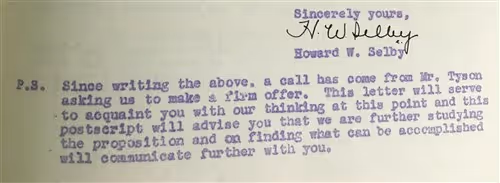
“P.S. Since writing the above, a call has come from Mr. Tyson asking us to make a firm offer. This letter will serve to acquaint you with our thinking at this point and this postscript will advise you that we are further studying the proposition and on finding what can be accomplished will communicate further with you.”
Tyson’s heavy handed dealing backfired when the Methodists pulled out of the Rolling Ridge deal, but as we now know, Tyson did have a change of heart when it came to the sale.
As Etsey tells the story in an October 1948 letter to Leslie Johnson, the first Secretary of the Commission, “we almost lost the opportunity to purchase [Rolling Ridge] until I hit upon an idea that worked.” Etsey’s idea: “Naming the large room within the main building Tyson Hall. It took many months of persistent, courteous, diplomatic action to finally get the property upon this latter basis,” but it worked. Etsey was not only able to get Tyson to reduce the price to $50,000 but he was also able to negotiate for “a Chevrolet truck, power equipment, tools, and furniture, with light fixtures etc.” Success!
Agreement with Tyson for purchase of the property for $50,000 was the first big hurdle, with many more challenges to follow as “the real beginning” of Rolling Ridge required “proper financing and programming so that it will serve the purposes for which we have acquired it.”
The entire third floor of the house along with the Carriage House and servant apartments required completion as the areas had remained unfinished during the 20 years Tyson owned the property. This estimated cost was $5,000. Additional furnishing was estimated at $5,000. Maintenance was estimated at $8,000. Interest on the loan was estimated at $2,000. The fundraising goal became $70,000.
With the Rolling Ridge Commission approved in May 1948 and purchase agreement in July, the funds on hand to pay the deposit were limited. Fundraising efforts needed to move quickly as an initial deposit of $5,000 was due to Tyson five days after the purchase agreement, with an additional $7,500 needed in 90 days so that the Rolling Ridge Commission could “assume responsibility for management and operation of the property.” In total, $12,500 was to be paid up front with a mortgage of $37,500 and 4% interest.
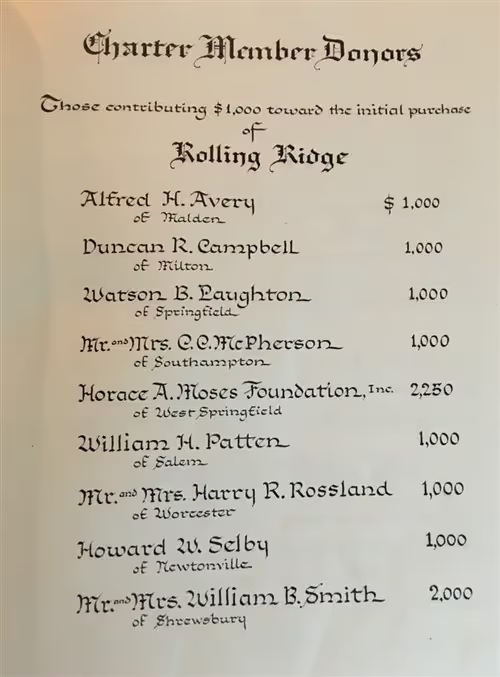
To lead the efforts, members of the Commission generously stepped forward with those contributing $1,000 or more listed in the Book of Remembrance and recorded as “Charter Members.” Methodist church groups, youth groups, women’s groups, and many individuals soon began contributing and pledging monthly gifts. Even the New England Conference financially supported this effort with $9,088.48 from the Long-Sought-For-Pond-Fund being made available to the Commission to “complete the purchase of the Rolling Ridge Estate.”
On October 2nd, over 1,000 gathered to consecrate Rolling Ridge as “a Methodist religious education center.” With New England Conference Bishop John Wesley Lord presiding, the ministry was characterized as “an adventure in faith” as he predicted “the future strategy and of the officers and leaders of the church will justify this endeavor.” Selby also announced the effort of raising $100,000 to “convert the estate into one of the finest centers of its kind in the country.”
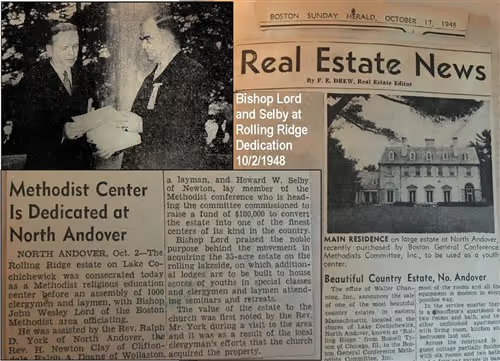
With great vision and intention, Rolling Ridge began with lots of money to raise and lots of work to do to create the physical space required for the ministry to occur. As fundraising faltered in 1949, a non-interest bank loan was secured so that improvements could be completed. By June 1950, just under two years after the purchase from Russell Tyson, 6 Youth Institutes, 9 Adult and Young Adult Conferences, Institutes and Training Schools, 46 groups from Methodist churches, 17 Student Christian Conference, and many other groups had already experienced the beauty and blessings of Rolling Ridge.
Bishop Lord’s description of the Ridge as “an adventure in faith” at the 1948 dedication morphed into “A Venture in Faith,” which would frame the fundraising efforts of the early years, leading to a major campaign 10 years later to pay off the mortgage. “The Miracle of Rolling Ridge” set a goal of $175,000.
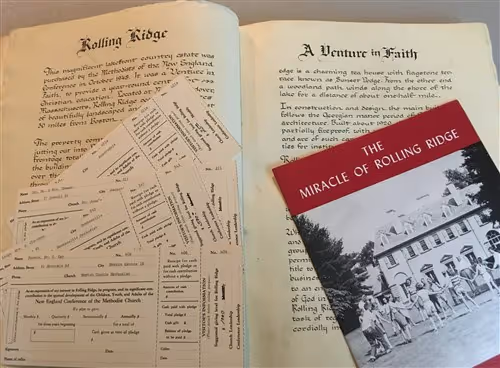
While there were large donors who stepped up during the first decade – F. Stanley Beveridge with $25,000 to build a dining room in memory of his wife Theresa and the Horace A. Moses Foundation with $15,000 to build the dormitories over the garage, it was the small and faithful gifts of countless many that have financially supported and sustained the Ridge throughout its history.
75 years later and the “Venture in Faith” continues, as does the fundraising. While we prayerfully wait for our next large donor – our next Beveridge, Moses, or Tyson – to support our efforts to upgrade our 100 year old building, we know that it has been and always will be the small and faithful gifts from people whose lives have been blessed by the Ridge.
We received a check in the mail this week from someone on the West Coast who regularly joins one of our ONLINE SoulCare groups. Inside a beautiful card there was a simple handwritten note, “Thank you for all you do.” That testimony is the Miracle of Rolling Ridge. That transformed life is the Venture in Faith. The love that sent that check is the reason our ministry has continued for 75 years.

As we approach our 75th anniversary celebration on Sunday, September 24th, we hope that you will join us on our beautiful and historic grounds as we remember the legacy of our ministry, celebrate the “diamonds” in our history, and look forward to our future together. From 10-2 pm we will celebrate with artists and musicians (and of course, food), with our official anniversary program and memorial dedications beginning at 2 pm. Click here for more information.
And on this 75th year of the Ridge, we invite you to become one of those faithful financial supporters that has sustained us through the years. A gift of $75 or $750, or maybe even $75,000 is one way you can say thanks to the Ridge and to God for this ministry. Click here to give your gift of thanks to the Ridge.
As it was in the beginning in 1948, your support allows us to create space ONSITE and now ONLINE on this ever evolving “Venture of Faith.” Thank you for all you do to make Rolling Ridge the ministry it has been and all that it will be as a blessed sacred space over the next 75 years.
** A special note of appreciation to the now deceased Dr. Leslie H. Johnson, Secretary of the Commission 1948-1958, who compiled the “big red book” (pictured above) from which much of the information in this article comes. Johnson’s notation: “These minutes have been kept in rather lengthy detail, but it was felt by him that most of the members of the Commission could be kept better informed by doing so. Therefore, these lengthy epistles.” Because of his detailed minutes we today get a good understanding of how Rolling Ridge came to be. Thank you, Dr. Johnson!
